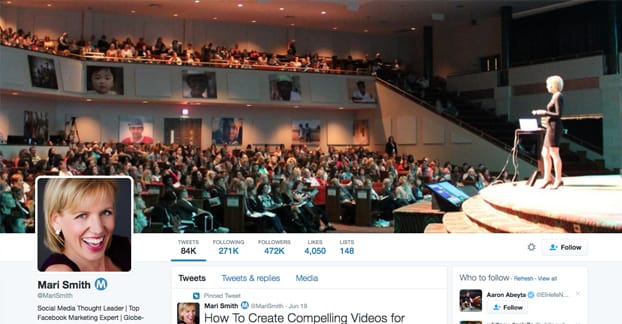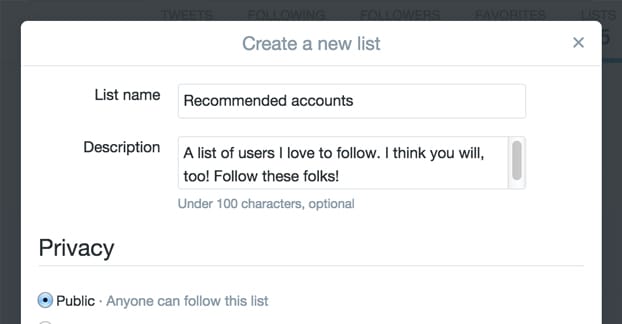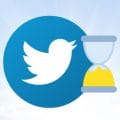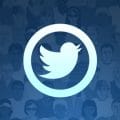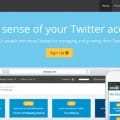One thing I’ve noticed while I write for this site is that almost all of my advice is tailored for businesses. A lot of it can apply to individual users as well, but there are some advantages companies have over individuals. They can operate with larger budgets, they can leverage the resources of the business in other communication channels, and they have a broader presence on the internet than most individuals.
That said, often times you’ll find yourself wanting to build an account for an individual. Perhaps you’re building one for personal reasons. Maybe you’re trying to build a CEO page for your business, and need it to be separate from the business Twitter account.
Primarily this limits you in a few ways.
- You may have a smaller budget for advertising, or you may not be able to pay for advertising at all. There’s nothing in the Twitter terms to prevent individuals from using ads – quite the opposite in fact – but that doesn’t mean you can afford it without business backing. On the other hand, if your business is stingy, you might have a higher budget personally.
- You may have less of a way to make a profit from your account growth. You can’t necessarily refer people to your business, because then the business gets the profits. Unless you have personal items to sell, you may be out of luck. On the other hand, running a personal blog and selling personal profit ebooks can go a long way.
- You may have less content to share. A business can share all of the posts that go on their blog. You may be restricted to just sharing the ones you write, with the occasional extra post you think is interesting. This means you’ll be limited to more personal opinions.
On the other hand, this all means you have more freedom to make personal tweets. You can tweet about your vacation, you can tweet about your weekend, you can tweet about your favorite recipes. You can share items that are off-topic for a business and would not fit in your content plan normally.
As it turns out, it’s not actually that hard to grow a Twitter profile for a personal independent user, building your own personal brand. You just have to take the time to learn how Twitter works, which you probably already have down if you’re a marketer that has built business Twitter accounts before. If you haven’t, well, you can learn about how Twitter works with something like the Copyblogger Ultimate Guide to Twitter, the Complete Twitter guide on MakeUseOf, or just the rest of this blog.
Step 1: Set Up a Great Profile
Unlike with a brand, you’re not going to be able to turn your profile into a giant advertisement. You’re going to want to do something a little more personal instead.
For images, your profile picture should be a nice compelling picture of yourself. It could be a professionally taken portrait, it could be a candid from an event you attended, whatever. The point is to have something that represents you and has some personality that stems from who you are.
Accentuate this picture with your cover photo. For a cover photo, I like a nice landscape, usually a picture I’ve taken at a location I visited on vacation. Nice scenery goes a long way towards making you look worldly and well traveled, which gives you more inherent credibility as an intellectual leader. Remember, this is all about building up who you are as a person, rather than who your business is trying to be.
Then you have your text. This is where you can go freeform. I’m going to give you a handful of guidelines, which will help you shape the two or so sentences of room you have.
- Make sure your bio explains who you are. It can be as simple as “CEO of Companyname” or something a little more exotic, like “Frog Enthusiast”.
- Make mention of the niche you want to be known for. If you’re a marketer but your passion is for developing technologies, you may want to emphasize the latter over the former, so you don’t attract the wrong kind of audience.
- Strive to be real. Minimize the blatant exaggerations. Most of the people who say they love partying on Friday don’t actually want that to be their core defining trait, and most of the people reading about your love of partying aren’t going to believe you love it as much as your bio claims.
- Use a hashtag, or two at the most. Typically this should be a hashtag that can be used to gain your attention, or a tag that indicates one of your primary interests. If you want, it can be a branded tag for your company, but that’s only reliable if you want to keep a strong link between your personal and your business profiles.
If you can check all of those off your list and still come in with just a couple of short sentences, you’re in a perfect position. Contrary to some advice, I don’t like trying to cram a URL or two in the profile. No one is going to check three URLs in your profile, right? They’ll check one. Put the most important URL in your website field and leave it at that. If you want to advertise other websites, you can use pinned tweets for that.
Step 2: Be Active
Now, activity means different things to different people. In this case, I’m talking about just using the site like a person. I recommend spending at least half an hour on the site each day, though it’s perfectly fine to split that up amongst several checks throughout the day.
Being active means doing a few things. First, you want to browse through what the people you follow are saying. This will allow you to engage with people, both influencers and non. Like a few tweets, retweet a few tweets, make a few replies. Try to keep up the value, but don’t try to shoehorn in a blog post link in every reply.
In addition to retweeting a few tweets, you should come up with something to tweet about. It can be something about you or your position in life. It can be a post you wrote. It can be a post you read, or a current event you want to comment on. It can be an event you’re attending. Just post, and don’t agonize over every tweet being perfect. People cut individuals a lot more slack than they do businesses.
Make sure the tweets you make include some relevant hashtags. I generally like to #tag specific #relevant words in a sentence, rather than just writing a sentence and adding tags to the end of it.
On top of whatever usual tweeting you do, try to make sure you make at least one or two tweets per day about ongoing trends. Twitter has a whole list of trends on the side of the window, some local and some global, so pick one and click it. This will show you the ongoing conversation that’s trending, and you can either tweet fresh to add to it, or respond and retweet what’s already going on. Either way, it puts you into a relevant ongoing conversation, which makes you more available.
Step 3: Start the Follow Engine
Neil Patel recommends that you follow at least two people each day. I figure anywhere from 1-5 is fine. The idea is the same regardless.
Following people keeps your activity up on Twitter, and it gives you fresh content to see at all times. It was a big leap for me to follow so many people on Twitter because I’m used to trying to read everything that’s posted each day. Once you pass 150 or so follows, it becomes unmanageable to keep that up. You have to trust Twitter’s algorithm to show you the best content, and do some scrolling to catch up on recent content. Yes, you’ll miss some things, but that’s fine.
To make sure you catch the most important content from the most important users, I recommend building an exclusive list. Put the most important people you follow on that list, so you can browse everything they’ve posted at a glance. Try not to let this list get out of hand in size; you should cap it at 200 or so people depending on their activity level and your availability to read through it. You can also make different lists for influencers in different industries.
Who should you follow, though? One good indication is the people on the “who to follow” tab Twitter provides. This is a list of suggestions based on people who have interacted with you recently and people who are followed by a lot of other people you follow.
You can also follow industry leaders and big names. For example, if you’re a writer, you might want to follow people like George RR Martin, JK Rowling, Neil Gaiman, and others in your favorite genre.
The caveat with following big name accounts like those is that you’re not likely to be noticed. Most of these people get thousands of notifications a day, and they don’t have the time or the inclination to check them all. That’s why you’ll want to follow smaller names and minor influencers as well; they’re more likely to take notice of you.
Now, I’ve seen a lot of recommendations to follow anyone who follows you. At the same time, the people saying to do so also say you should keep the number of people you follow lower than the number of people following you. Something has to give, if you’re following people who don’t follow you, and all the people who do. You’d end up with more following than followers, and that math just doesn’t check out.
I recommend considering following back anyone who follows you, but don’t do it sight unseen or automatically. It’s generally a good idea to scroll back a few days or weeks into their timeline to see what sort of content they’re posting. If it’s all stuff you wouldn’t mind seeing in your feed, follow them back. If it’s nothing you want to see, just accept the follow and move on.
I also recommend weighting it more heavily towards following them when you’re first starting out. Before you reach a self-sustaining critical mass, it’s important to get as much interaction as possible, and following someone back means they’ll pay more attention to you. It also gives you more opportunities for mutual engagement, further building relationships and activity.
Step 4: Keep it Up
They say it takes about 66 days on average to form a habit. Spend two months at this, checking and interacting with Twitter every day, and you’re well on your way to making it part of your daily routine. The only time you have to check yourself is when you end up spending hours and hours on the site every day. Don’t let it get in the way of your other duties.
What about Twitter ads? Well, you can run them if you want. It’s entirely up to you. Running some ads with the intent to get more followers will, indeed, get you more followers. The question you have to ask yourself is, is it worth it? If you don’t have a monetization scheme in place, you don’t have a way to recoup that loss. If having more followers is itself the value you’re looking for, it may be a worthwhile investment. I can’t make that judgment for you; you have to decide for yourself.
This will all help you get a Twitter personal account off the ground and help you start building a personal brand. This is excellent if you ever choose to leave the business whose account you’ve been running, or simply want to branch out to other experiences. Once you have that independent following, you can do with it what you wish.

